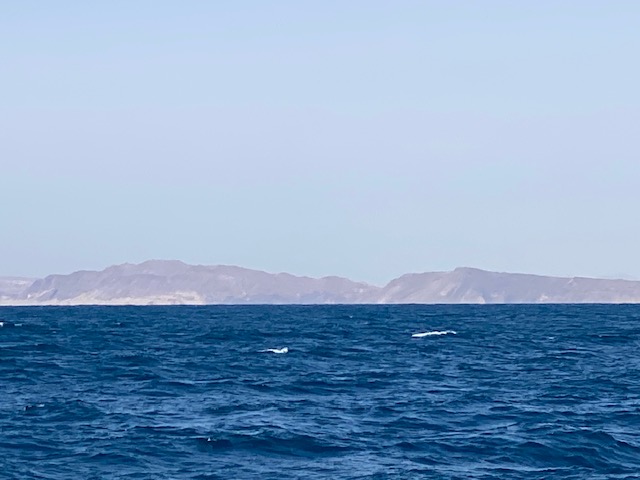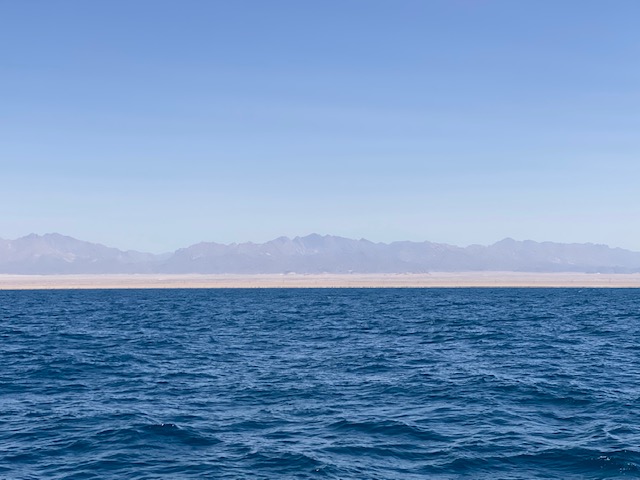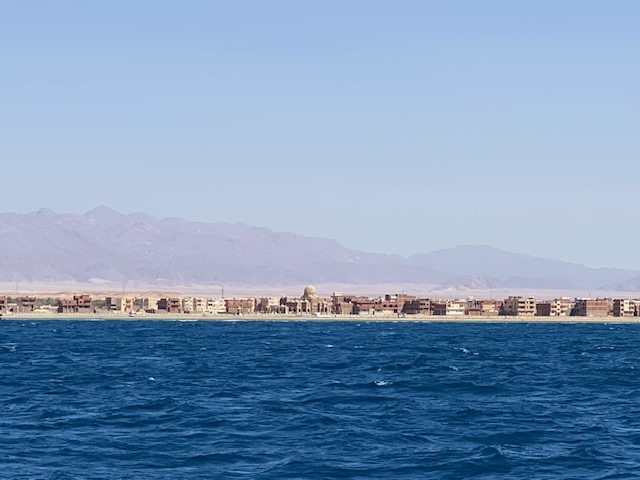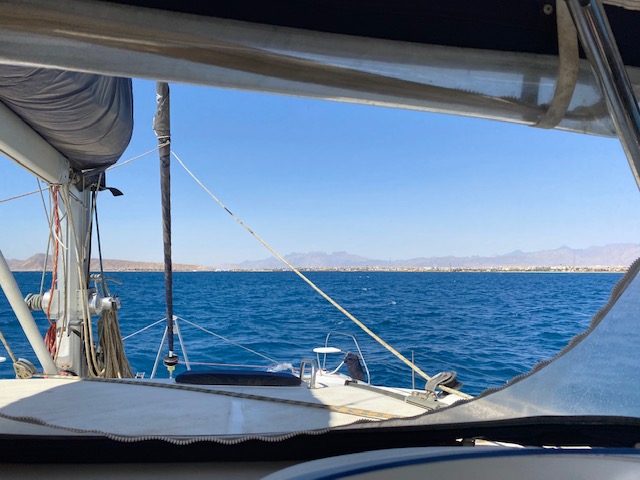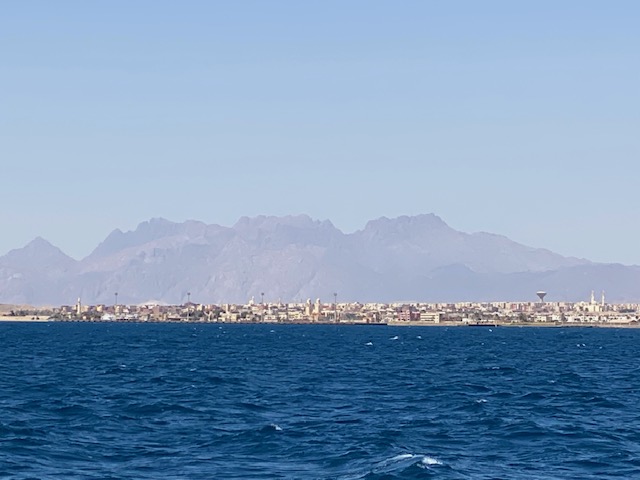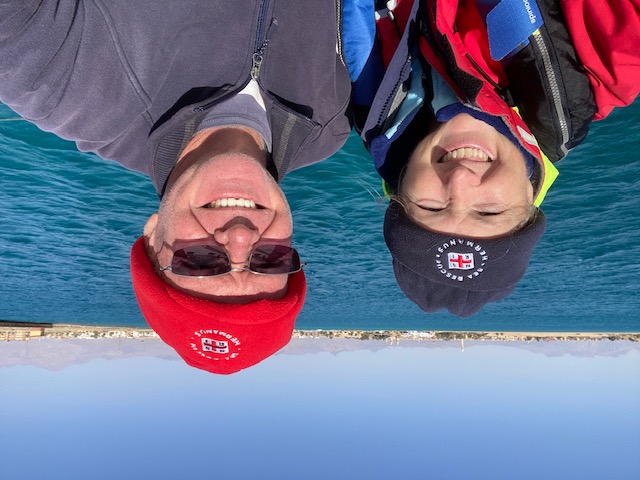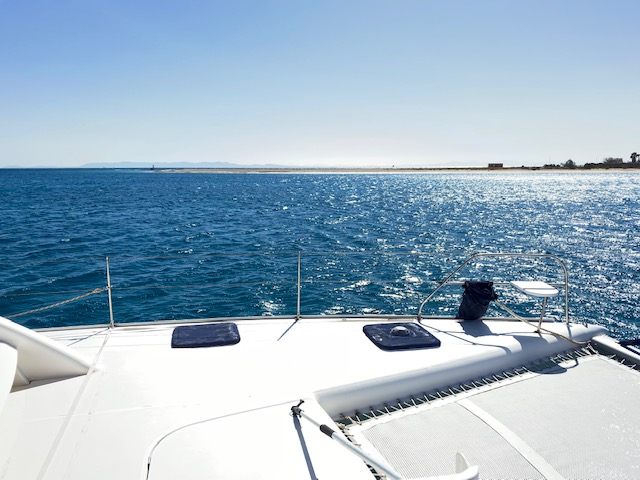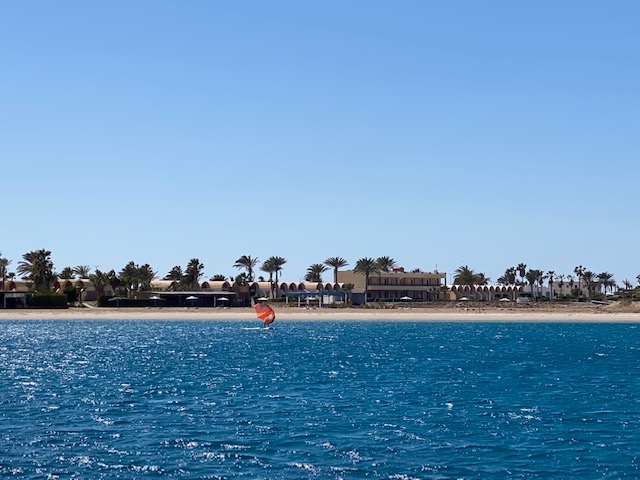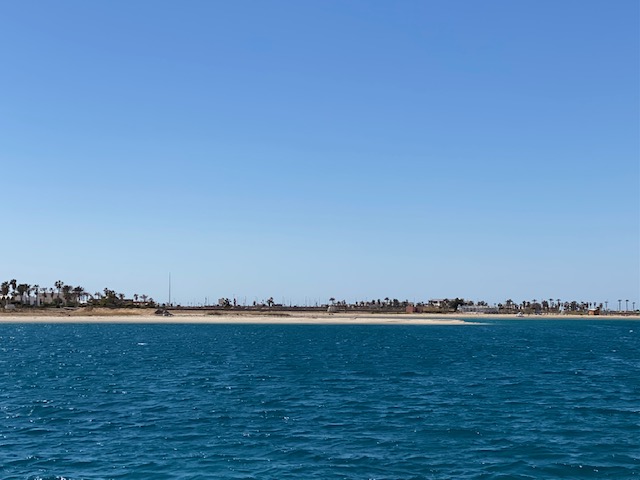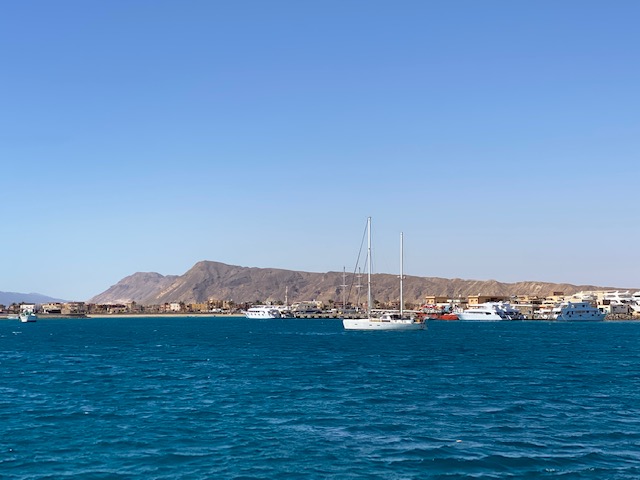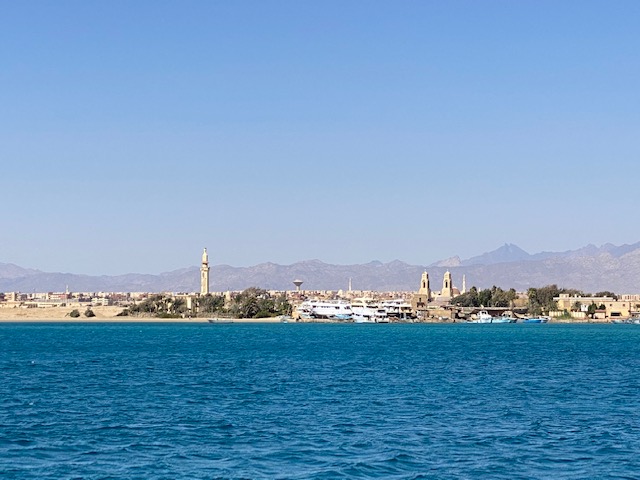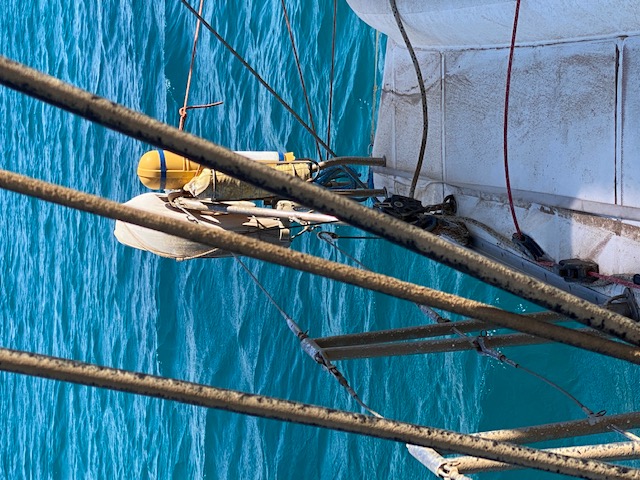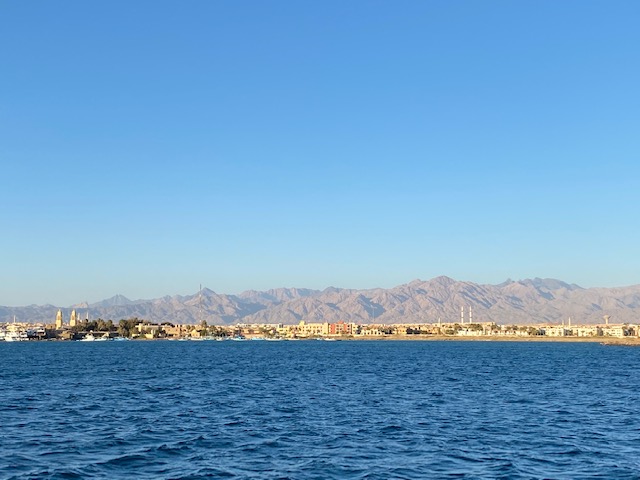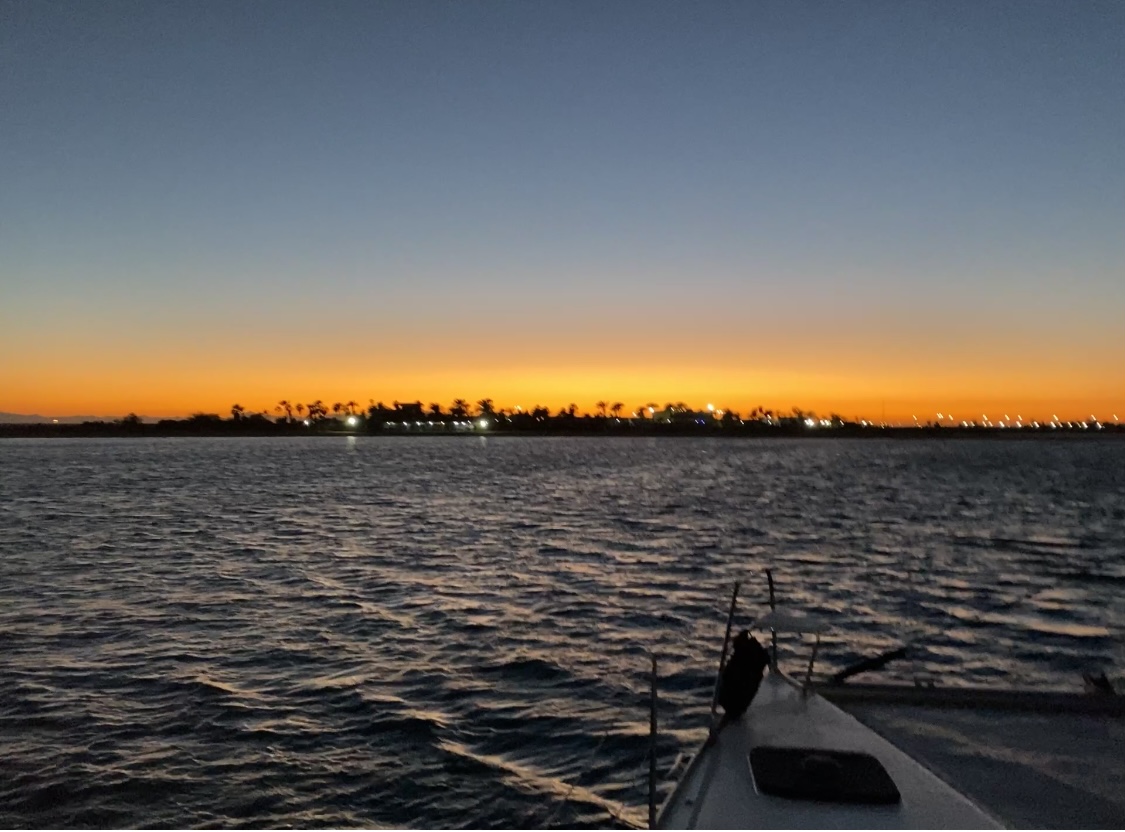After reaching the edge of the southbound side of the shipping lane just before midnight last night, we had no choice but to stay west of it and motor against the traffic, as it was far too busy to cross. Then around 0100 Roy saw the gap, increased our speed and got us safely to the other side; something akin to trying to walk across a busy motorway when the traffic consists entirely of speeding 18-wheelers. Up until that point, though, we were protected by Shakir Island and the numerous reefs scattered to the west of the shipping lane, but once we reached the eastern side, motoring with the northbound traffic, the wind and the waves picked up, slowing us down to a crawl.
There is a reason not too many catamarans make this passage compared to monohulls; catamarans are know for the difficulty of sailing close to the wind and, since they sit on top of the water, they bounce over waves vs cutting through them. The result is that the usual “hobbyhorse ride” becomes more of a “bucking bronco” experience in short, steep waves, which is not very pleasant at all. As usual, instead of the 6-10 Kts of wind as forecast, we had 15-20 Kts, creating these waves for which the Red Sea and the Gulf of Suez are notorious. The good news is that we shaved another 95NM off our passage and everything calmed down somewhat as we got closer to the shoreline on our approach to El Tur; some documentation references the small city as El Tor.
It was, however, our first glimpse of the beautifully dramatic Sinai Peninsula, home to the 6th-century St. Catherine’s Monastery near the biblical Mount Sinai, as the sun reflected off the red rock, contrasting sharply with the deep blue water, that made all the bouncing around worthwhile.
Research later revealed quite an interesting history associated with this small city called, also known historically as Raithu, after the Raithu desert, located around the city, between Saint Catherine and the Red Sea. The modern name of the city comes from the Arabic term for the mountain, Jabal Al Tor, where Moses received the Tablets of the Ten Commandments from God.
The ancient city of Raithu, meaning “land of fruits”, due to the numerous date palms in the area, has also been identified as the biblical Elim, where Moses and the children of Israel “came to Elim, where there were twelve springs and seventy palm trees, and they camped there near the water” (Exodus 15:27). Today this location is known as Hamam Loussa, where there is a newly renovated monastic shrine with a garden and date palms.
El Tor is also the site where Christian monks, fleeing persecutions, have been present since the 3rd century and from the late 3rd and early 4th century, it has been the site of monastic habitations. The Rutho Monastery, located in the Raithu desert, was commissioned in the 6th century by the Byzantine emperor, Justinian. It was founded in remembrance of the "Martyrs of Raithu", the 43 monks murdered around AD 378 by bedouins during the reign of Emperor Diocletian. Additionally, although the ancient lavra at Raithu, a type of monastery consisting of a cluster of cells or caves, was destroyed in the 11th century, excavations have uncovered the extensive ruins of the monastic complex. Today, Greek Orthodox Christians can also be found still living in the city as well.
After the El Tor strain of cholera was discovered in 1905, the city became a quarantine camp for Muslim pilgrims returning from the Hajj in Mecca, Saudi Arabia.
This was another fascinating glimpse into biblical times.
This evening we were treated to the most stunning sunset and while theories abound as to how the Red Sea was named, we have our own theory. Some believe it could have been the result of the red-hued "sea sawdust", a type of algae, that grows near the water's surface, while some historians believe it is named for the Himyarites, a group who once lived along it's shores and others believe that the word "red" is actually a designator of the Sea's location, relative to the ancient Mediterranean world ie to the South. In ancient languages, the colours black, red, green, and white referred to North, South, East and West, respectively. For us, however, is was the stunning sunset, reflecting off the mountains and turning the east coastline red, while the setting sun in the west turned the skies a deep red of varying shades, which reflected off the water. We were basically inside a red bubble of sorts! Spectacular!
